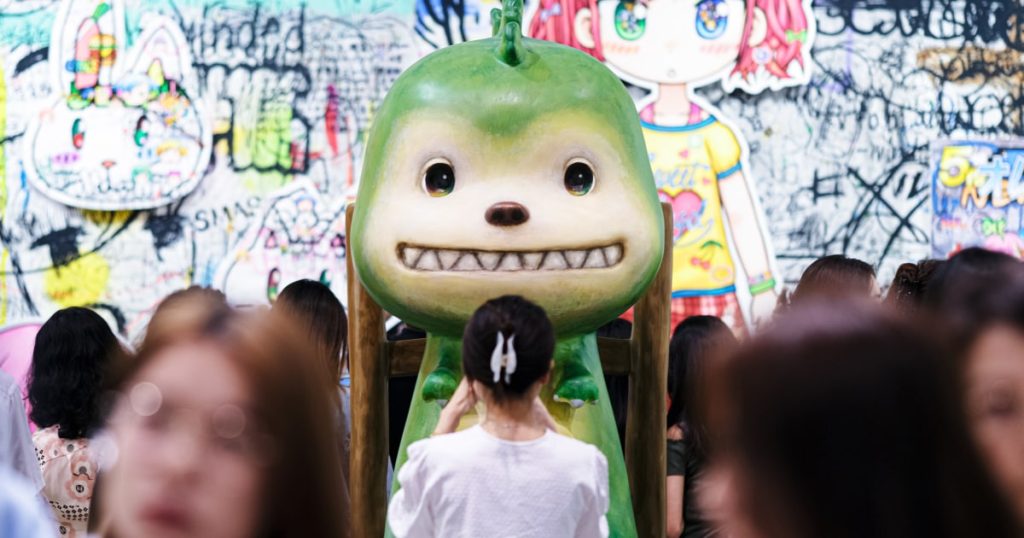Art Basel returned to full scale this year with more than 240 international galleries participating, along with the related Art Central event featuring almost 100 galleries from Hong Kong and around the world. The two events attracted both serious art buyers and casual ticketholders eager to engage with the art on display. The government provided financial support to both events in an effort to promote major arts and cultural events as a way to revive Hong Kong’s economy and international reputation following years of pandemic isolation and a crackdown on dissent. Hong Kong Culture Secretary Kevin Yeung emphasized the city’s role as an East-meets-West center for international cultural exchange.
While Art Basel has downplayed concerns about free expression being compromised, critics argue that self-censorship may be playing a role in which galleries are selected to participate in major art fairs like Art Basel. The crackdown on dissent in Hong Kong has raised questions for international art companies who want to take advantage of commercial opportunities in the region. Danish sculptor Jens Galschiot’s sculpture commemorating the victims of the 1989 Tiananmen Square crackdown was removed from the University of Hong Kong in 2021, signaling the challenges that artists face in navigating the political environment in Hong Kong. There is a sense of apprehension in the artistic community, with some artists choosing to move abroad to avoid potential repercussions.
The passing of the national security law in 2020 has significantly impacted Hong Kong’s pro-democracy opposition and has raised concerns about freedom of expression in the art world. The law targets activities such as sedition, with harsh penalties for those found to be inciting hatred or disaffection towards the Chinese and Hong Kong governments. This legal environment has led to increased self-censorship in Hong Kong, with politically sensitive works being removed from public spaces and performances being canceled due to national security considerations. The restrictive laws have also prompted concerns about the stifling of artistic expression in the region, potentially deterring international artists from participating in Hong Kong’s cultural events.
The heightened legal risks associated with the new Article 23 law in Hong Kong are expected to exacerbate self-censorship and further discourage artistic communities from abroad to visit the region, according to experts. The law’s broad jurisdiction and potential impact on artistic expression could have ripple effects beyond Hong Kong, influencing Western galleries and arts organizations operating in the region. With the threat of censorship looming, there is a call for Western arts organizations and auction houses to speak out in support of the Hong Kong artistic community. The responsibility to advocate for the freedom of expression in the art world falls on these institutions to ensure that artistic voices are not silenced by restrictive laws.
Despite the challenges posed by the political climate in Hong Kong, the city remains a prominent hub for the art world, with major auction houses expressing confidence in the region. The opening of cultural institutions like the M+ art museum and the Hong Kong Palace Museum, along with the presence of prestigious auction houses, reflects the city’s ambition to establish itself as a cultural center in Asia. However, the delicate balance between promoting artistic expression and complying with stringent national security laws presents a complex dilemma for stakeholders in the art industry. While Hong Kong’s reputation as a cultural hub may continue to attract artists and art enthusiasts, the ongoing political tensions highlight the need for a nuanced approach to navigating the evolving landscape of freedom of expression in the region.


